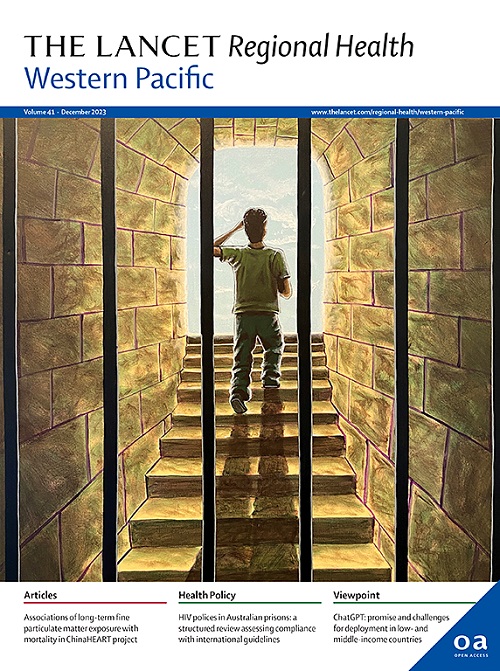到2030年实现澳大利亚土著妇女全国纯母乳喂养目标的蓝图
IF 8.1
1区 医学
Q1 HEALTH CARE SCIENCES & SERVICES
引用次数: 0
摘要
6个月的纯母乳喂养(EBF)对母亲和婴儿都有显著的健康益处,可以保护婴儿免受感染,支持认知发育,并减少肥胖和慢性疾病的风险。此外,EBF还能降低母亲患产后并发症、2型糖尿病、乳腺癌和卵巢癌的风险。在全球范围内,6个月以下婴儿的EBF患病率已达到48%,接近世界卫生大会2025年50%的目标。然而,澳大利亚土著母亲六个月的EBF率仍然很低(18.8%),远远低于2025年设定的50%的国家目标。澳大利亚各州和地区之间存在显著差异,只有北领地达到了这一目标。北领地的成功归功于州一级对澳大利亚土著居民医疗保健的大量投资,人均支出最高(11 082澳元/人/年),土著和托雷斯海峡岛民的医疗从业人员比例最高(每10万人中有256人)。此外,土著社区控制的卫生组织(ACCHOs)在提供文化上安全、社区主导的母乳喂养方案方面发挥了至关重要的作用,有助于提高EBF率。这些发现表明,北领地的方法可以作为改善全国母乳喂养结果的“蓝图”。有了联邦政府的持续支持和全面的国家政策,到2030年为第一民族实现国家EBF目标是可能实现的。本文章由计算机程序翻译,如有差异,请以英文原文为准。
Blueprint to achieve national exclusive breastfeeding targets by 2030 among Aboriginal Australian women
Exclusive breastfeeding (EBF) for six months provides significant health benefits for both mothers and infants, protecting babies from infection, supporting cognitive development, and reducing the risk of obesity and chronic diseases. Additionally, EBF lowers mother's risk of postpartum complications, type 2 diabetes, breast and ovarian cancers. Globally, the prevalence of EBF among infants under six months has reached 48%, nearing the World Health Assembly's 2025 target of 50%. However, the six-month EBF rate for Indigenous mothers in Australia remains low (18.8%), falling significantly below the national target of 50% set for 2025. There are notable disparities across Australian states and territories, with only the Northern Territory (NT) meeting this target. The NT's success is attributed to substantial state-level investment in healthcare for Indigenous Australians, with the highest per capita spending ($11,082 AUD/person/annum) and the highest proportion of Aboriginal and Torres Strait Islander health practitioners (256 per 100,000 population). Additionally, Aboriginal Community Controlled Health Organisations (ACCHOs) have played a vital role in delivering culturally safe, community-led breastfeeding programs, contributing to higher EBF rates. These findings suggest that the NT's approach could serve as a ‘blueprint’ for improving breastfeeding outcomes nationwide. With continued federal support and a comprehensive national policy, achieving the national EBF target for First Nations Peoples by 2030 may be attainable.
求助全文
通过发布文献求助,成功后即可免费获取论文全文。
去求助
来源期刊

The Lancet Regional Health: Western Pacific
Medicine-Pediatrics, Perinatology and Child Health
CiteScore
8.80
自引率
2.80%
发文量
305
审稿时长
11 weeks
期刊介绍:
The Lancet Regional Health – Western Pacific, a gold open access journal, is an integral part of The Lancet's global initiative advocating for healthcare quality and access worldwide. It aims to advance clinical practice and health policy in the Western Pacific region, contributing to enhanced health outcomes. The journal publishes high-quality original research shedding light on clinical practice and health policy in the region. It also includes reviews, commentaries, and opinion pieces covering diverse regional health topics, such as infectious diseases, non-communicable diseases, child and adolescent health, maternal and reproductive health, aging health, mental health, the health workforce and systems, and health policy.
 求助内容:
求助内容: 应助结果提醒方式:
应助结果提醒方式:


